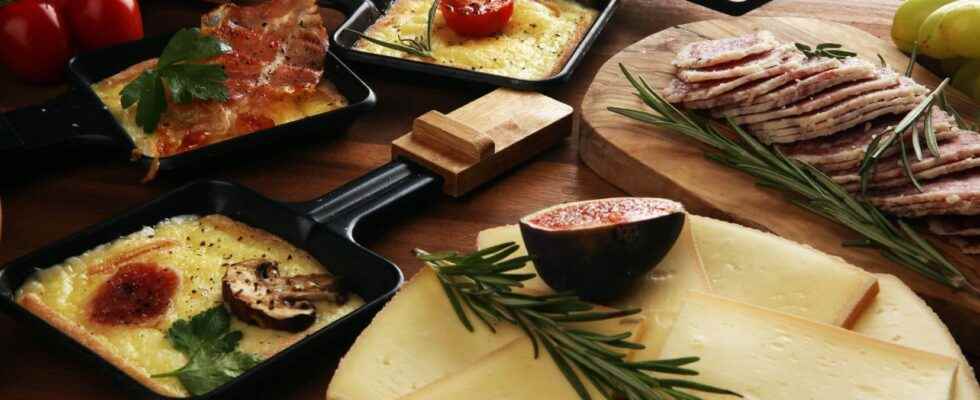This text is part of the special book Plaisirs
The raclette, convivial and gourmet, is one of the most comforting dishes of the cold months. It is so easy to prepare it: all you have to do is place your small oven with pans in the center of the table and cook your cheese on potatoes, vegetables or charcuterie. Or at least, that’s the Quebec way. Indeed, raclette, and the cheese of the same name, are delicious Swiss traditions that we have appropriated.
Raclette was born in the Valais region, in the heart of the Alps. The first written description of the dish dates from 1574. The versions differ, but according to legend, it was a winemaker named Léon who had the idea, one particularly cold winter evening, of melting his wheel of cheese over a wood fire and scrape it up once melted. This dish would then have officially been named in 1874. Its name in Swiss German means “fried cheese” or “roasted cheese”. In French, it takes its name from the act of scraping.
Since 2007, Raclette du Valais has been registered as a controlled designation of origin (AOP), and Swiss cheese makers must respect an ancestral recipe and very specific maturing methods to produce it. First of all, it must be made from natural raw milk. Then, the freshly made wheel is matured for a minimum of three months. It is the herbs fed by the cows, raised in high mountain pastures, which give the cheese its unique aromas.
The secret is in the fondant
In Quebec, there aren’t really any rules to follow to make a good raclette cheese, but the cheese makers agree: it must be tasty and melt well.
At the Fritz Kaiser cheese dairy, located in Noyan in Montérégie, raclette cheese has been the best seller since its founding in 1981. Its founder, Fritz, is originally from Switzerland. The traditional cheese is therefore taken very seriously.
Adrian Kaiser, the son and quality manager at the cheese dairy, says that raclette has always been part of his life: “children, we ate it all the time! I remember delicious grilled cheese with raclette cheese! »
Theirs is made from partially skimmed cow’s milk that is matured for six to eight weeks. Refining, the period of maturation of a cheese, “this is what gives it character, this pronounced taste that we love so much”, says Adrian Kaiser.
Simon-Pierre Bolduc, cheesemaker at Fromagerie La Station, in Compton, in the Eastern Townships, explains that this manufacturing step is really the key to the success of a good raclette cheese. “If aged too long, the cheese will melt in oil. On the other hand, it has to be matured for quite a long time to get its characteristic taste. »
Then, some will have fun flavoring their raclette cheese with apple cider, chili peppers or pepper. Others will decide to offer it in square slices, rather than round, to facilitate its use in skillet ovens.
To live the complete and traditional experience, Simon-Pierre Bolduc suggests melting his millstone over a wood fire.
Beyond Raclette
Adrian Kaiser does not limit his cheese to raclette, he adds it everywhere: on a vegetable gratin, a lasagna or in a sandwich.
He notes that it is a festive cheese and whose popularity is rather seasonal. It will culminate in the holiday season, when many Quebecers will be celebrating around a delicious raclette.
This will be the perfect opportunity to taste the know-how and creativity of Quebec cheese makers!
Local essentials to accompany raclette
This special content was produced by the Special Publications team of the To have to, pertaining to marketing. The drafting of To have to did not take part.
